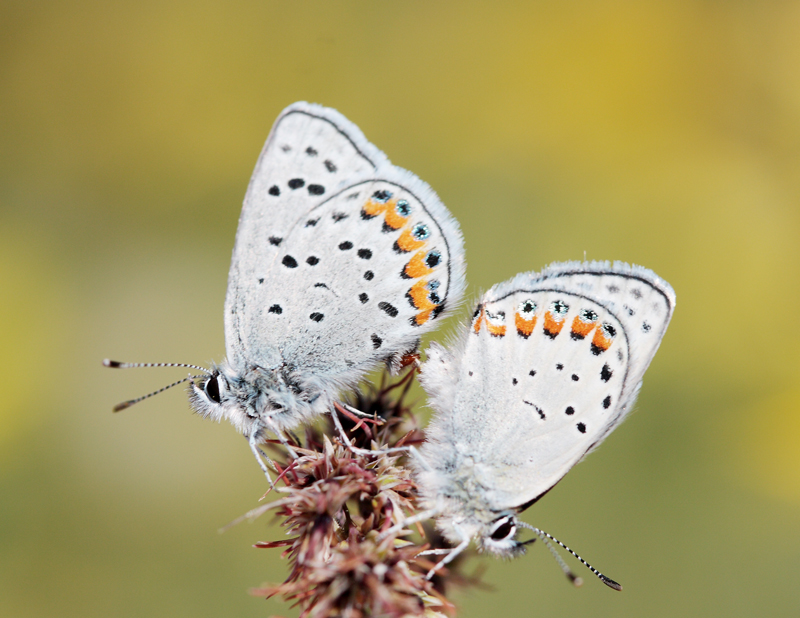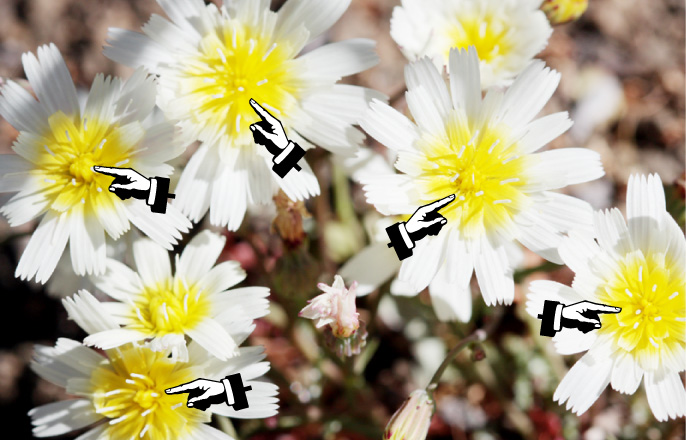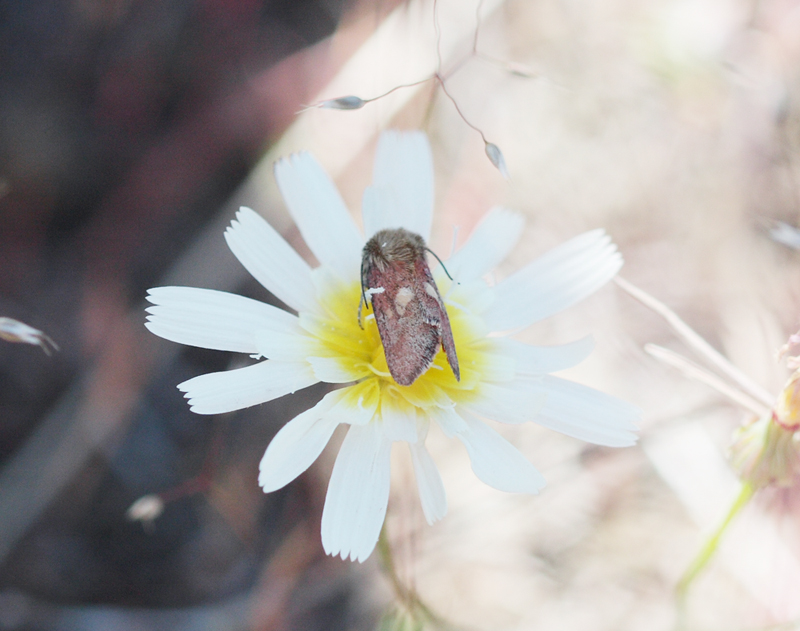Kwa mwishoni mwa wiki minne iliyopita sasa Nimekuwa kwenye Goose baada, kwa nondo moja, Speedy Heliolonche. Ni nzuri ndogo Noctuidae na forewings pinkish na hindwings stunning machungwa-nyekundu. Haipatikani mara nyingi sana na hupatikana tu kwenye safu za milima ya kaskazini mwa California Malacothrix floccifera – CA endemic maua. Kila safari nimepata skunked, mpaka leo – Nilikusanya mbili! Kama unavyoweza kukumbuka safari yangu ya kwanza ilikuwa karibu mwezi mmoja uliopita, hakuna nondo, lakini mfululizo mzuri wa vielelezo na picha za Adela nondo. Safari chache zilizopita hata hazijakaribia kuwa na tija kama ile ya Adela. Kwa hivyo nini cha kufanya wakati haujapata lengo lako? Pata kuchomwa na jua na uchukue picha za crummy.
 Kukamatwa katika tendo. Plebejus acmon
Kukamatwa katika tendo. Plebejus acmon
(iliendelea hapa chini)
Sio nondo kabisa.
 Hakuna nondo, hakuna nondo, hakuna nondo…
Hakuna nondo, hakuna nondo, hakuna nondo…
NONDO MOJA!
Hii H. celeris inaonyesha tabia ya kawaida ya nondo wa maua, kukaa kwenye kichwa cha maua wazi kama siku. Kwa kweli hukaa hivi usiku kucha kwenye maua (hata kama inafunga karibu nao kama maua mengine hufanya – jambo ambalo hupelekea wao kujulikana kimazungumzo kama “nondo za taco”… kwa sababu kitako cha nondo kinashikamana na petali na inaonekana kama kiko kwenye tako). Na hii ndio sababu niliacha nyumba yangu 6 asubuhi hii nafika 8. Ikiwa bado ni baridi, hata haziteteki unapokaribia. Na, kama hawaendi, ni rahisi kupima eneo la nondo na kujua kwamba haujakosa. Lakini, mara tu jua linapowapa joto, wanakuwa wanaharamu zippy na kutoweka kabla ya kufikia hata kofia ya lenzi. Hii ikiwa ni nondo ya kwanza kuiona leo kwa kweli sikufanya jitihada za kuchukua picha kubwa. Wahusika wana tabia mbaya ya kuruka mara tu baada ya kupata picha nzuri (vizuri, kawaida kabla ya risasi nzuri)… na sikuweza kuhatarisha kupoteza kielelezo pekee cha siku hiyo.



Where’s the “like” button? Great pics and good commentary.
“Hakuna nondo, hakuna nondo, no moth…”
Ha. I lol’d.
It is a pretty little thing…
A colorful, day-flying moth that sits prominently in the center of flowers – chemical defenses?
Hilo ni swali zuri, and it has crossed my mind before. There a lot of these small day flying flower moths that are clearly not cryptic yet I haven’t ever read about any chemical defenses or mimicry. I also don’t think of Malacothrix as a particularly noxious plant… will investigate.
Sawa, now I have to post the latest mystery moth pics I took a few days ago. (4/30) Pretty please if you have a moment, check it out and render your sage opinion. !
Ted’s question has nagged me this week. I’ve never heard of anyone studying this, lakini… Has anyone seen these flower moths under UV? See a related flower species under UV here: http://www.naturfotograf.com/UV_SENE_AQU.html. Labda, while sitting on the bulls-eye, these moths become “invisible” to predators who see UV, such a birds. The added bonus for the moths is this might increase their chances of finding a mate which is attracted to the UV bulls-eye.
You have to be right about that Katie, I’ve been thinking about this too. I can’t recall any literature in reference to adult insect UV crypsis. There is some work in regards to caterpillars… but I’ll have to do some more digging. Birds are probably not the primary predator on these moths since their acute vision makes them incredibly difficult to approach in the daytime. Lakini, most lizards see in UV and these flowers are just about at head level for most small reptiles (and there were a ton on site).
Sometimes, the light bulb just turns on.
So there is a monograph to this subfamily – and in there Hardwick (author) points out the counterintuitive crypsis of this moth! Instead of a good idea he postulates
Hivyo, he just assumes they are oddities because the flowers changed without them and they survived “possibly because of a decrease in predation pressure”.
Seems to me that UV crypsis is much more likely. Na… I don’t believe that’s been shown in adult Lepidoptera. Add it to the list!
; ) Just make sure you credit me for this idea when you become the ruler of the universe, ni… recognized expert on lepidopteran UV crypsis. I’m glad you looked it up. Please let me know if you find out any more info.